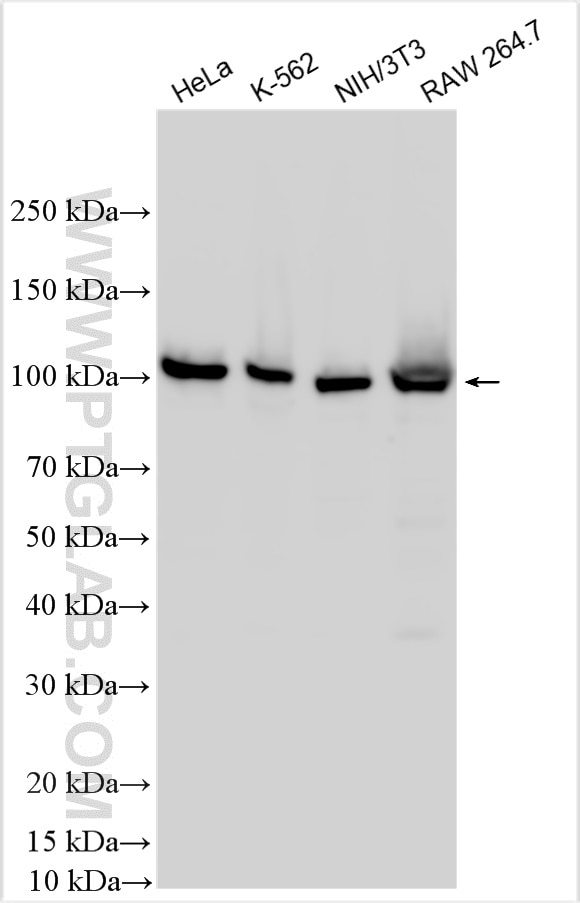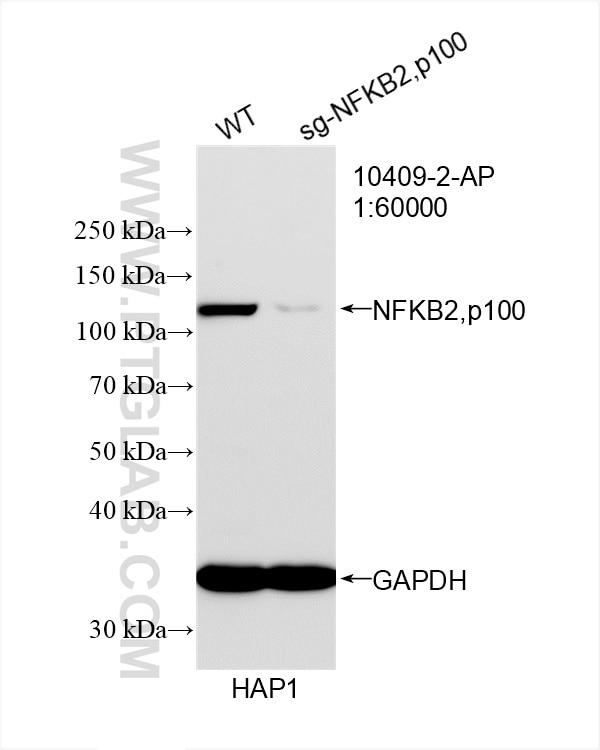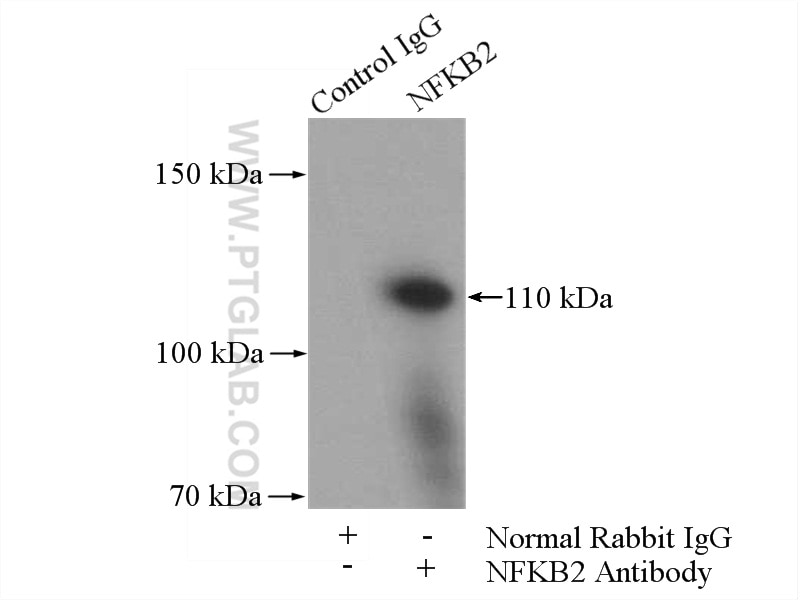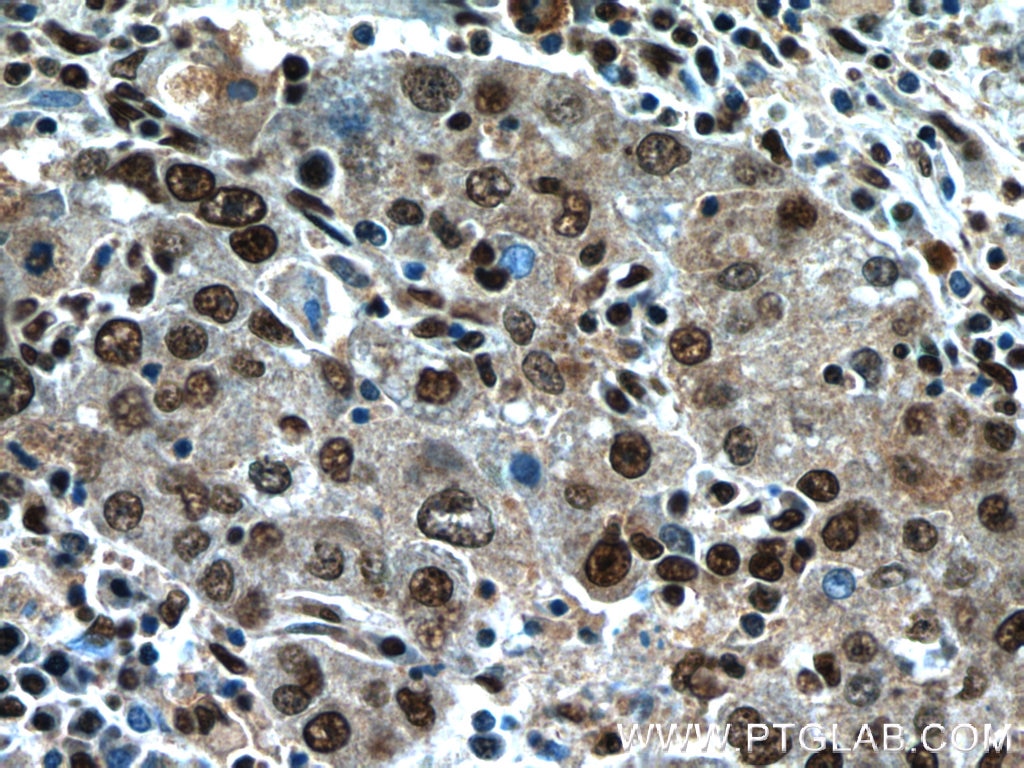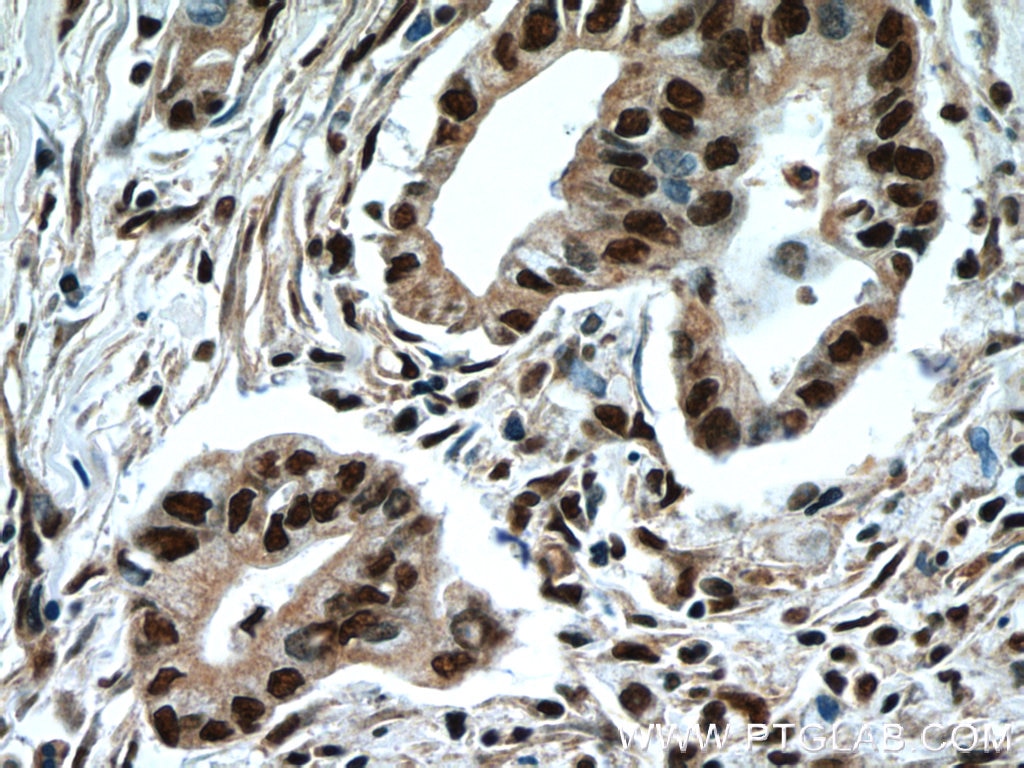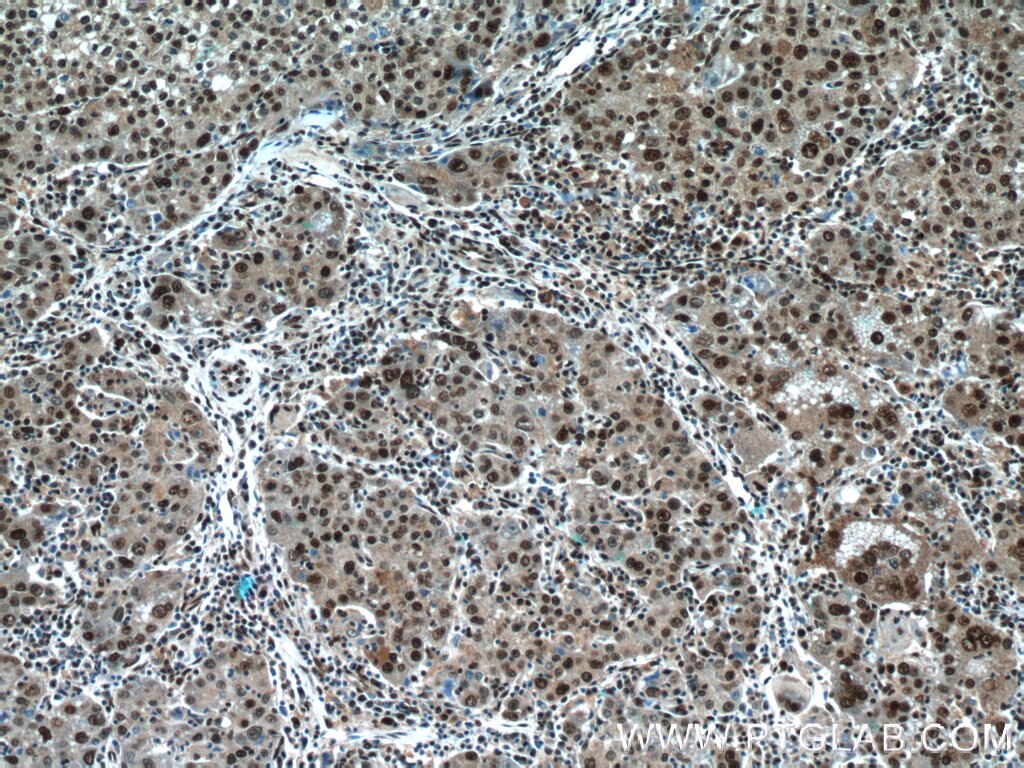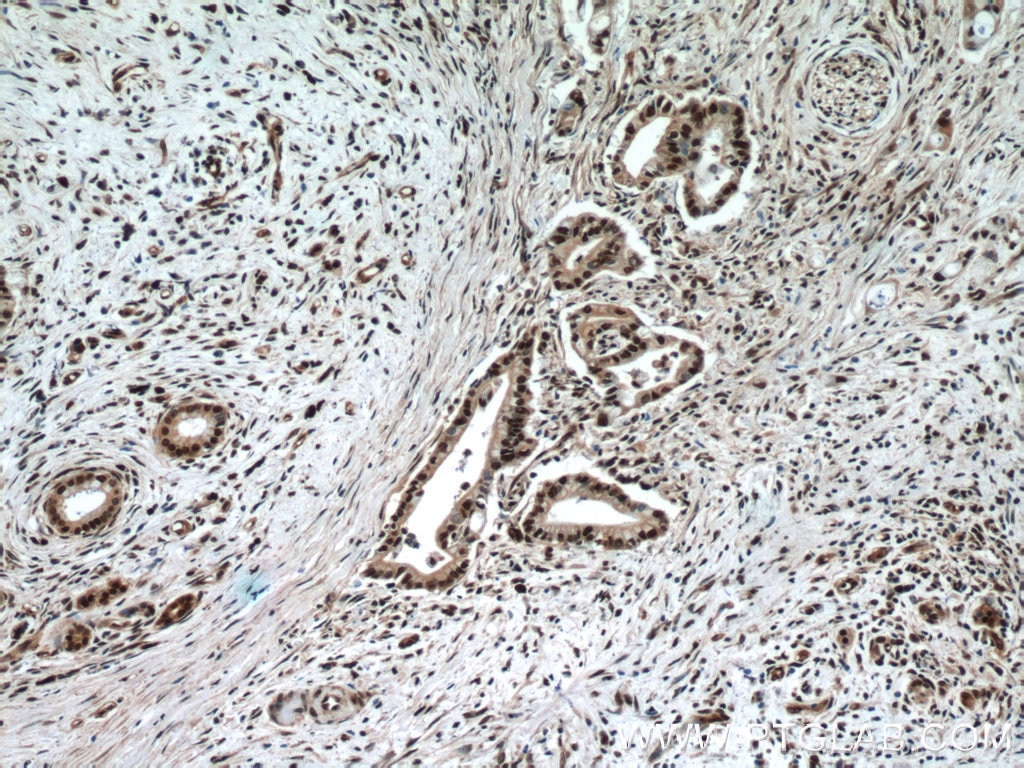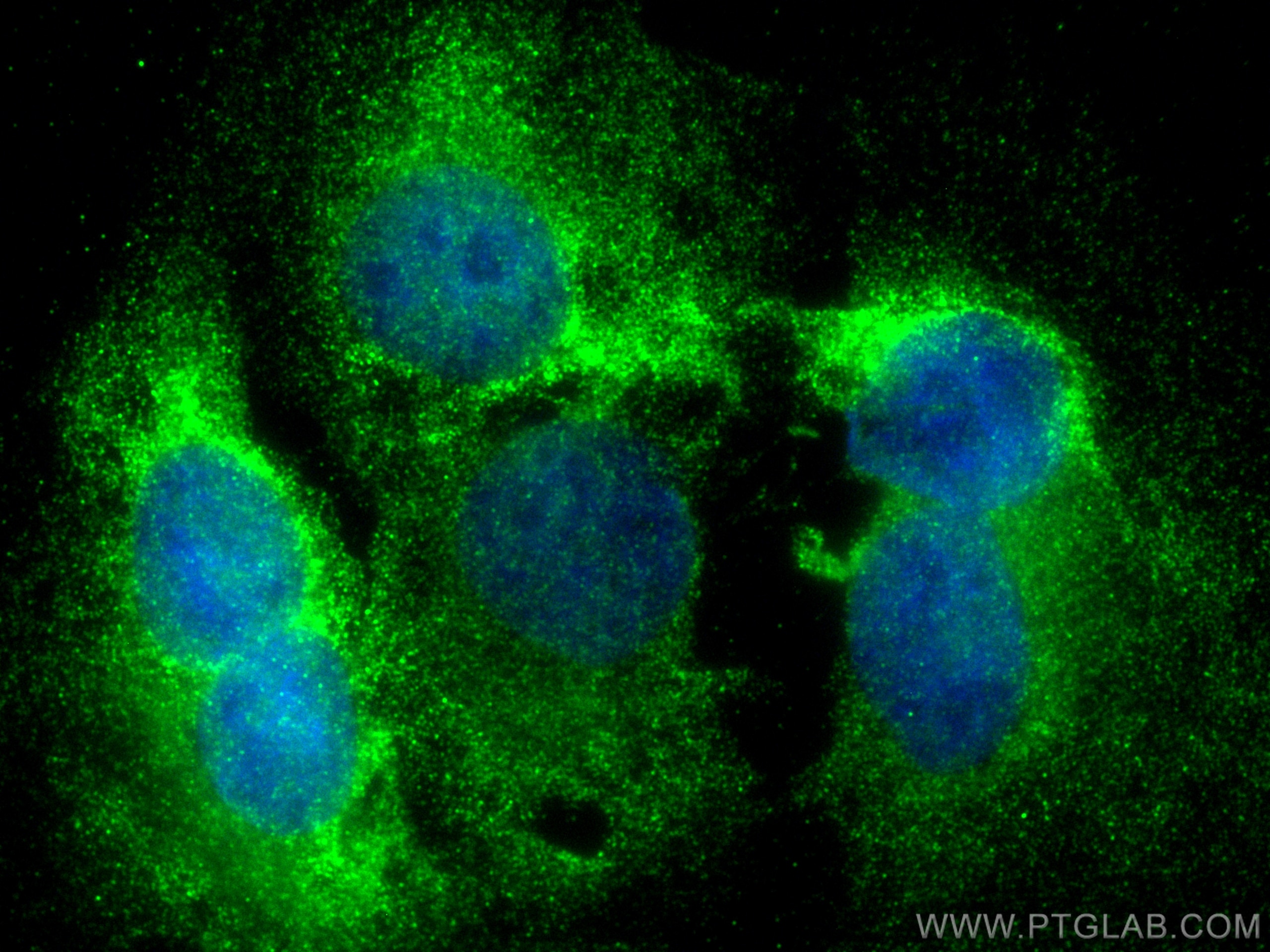Tested Applications
| Positive WB detected in | HeLa cells, HAP1 cells, K-562 cells, NIH/3T3 cells, RAW 264.7 cells |
| Positive IP detected in | K-562 cells |
| Positive IHC detected in | human pancreas cancer tissue, human liver cancer tissue Note: suggested antigen retrieval with TE buffer pH 9.0; (*) Alternatively, antigen retrieval may be performed with citrate buffer pH 6.0 |
| Positive IF/ICC detected in | U2OS cells |
Recommended dilution
| Application | Dilution |
|---|---|
| Western Blot (WB) | WB : 1:2000-1:12000 |
| Immunoprecipitation (IP) | IP : 0.5-4.0 ug for 1.0-3.0 mg of total protein lysate |
| Immunohistochemistry (IHC) | IHC : 1:20-1:200 |
| Immunofluorescence (IF)/ICC | IF/ICC : 1:200-1:800 |
| It is recommended that this reagent should be titrated in each testing system to obtain optimal results. | |
| Sample-dependent, Check data in validation data gallery. | |
Published Applications
| KD/KO | See 1 publications below |
| WB | See 17 publications below |
| IHC | See 8 publications below |
| IF | See 2 publications below |
Product Information
10409-2-AP targets NFKB2,p100 in WB, IHC, IF/ICC, IP, ELISA applications and shows reactivity with human, mouse samples.
| Tested Reactivity | human, mouse |
| Cited Reactivity | human, mouse, rat |
| Host / Isotype | Rabbit / IgG |
| Class | Polyclonal |
| Type | Antibody |
| Immunogen |
CatNo: Ag0662 Product name: Recombinant human NFKB2 protein Source: e coli.-derived, PGEX-4T Tag: GST Domain: 600-899 aa of BC002844 Sequence: GLYPVHLAVRARSPECLDLLVDSGAEVEATERQGGRTALHLATEMEELGLVTHLVTKLRANVNARTFAGNTPLHLAAGLGYPTLTRLLLKAGADIHAENEEPLCPLPSPPTSDSDSDSEGPEKDTRSSFRGHTPLDLTCSTKVKTLLLNAAQNTMEPPLTPPSPAGPGLSLGDTALQNLEQLLDGPEAQGSWAELAERLGLRSLVDTYRQTTSPSGSLLRSYELAGGDLAGLLEALSDMGLEEGVRLLRGPETRDKLPSTEVKEDSAYGSQSVEQEAEKLGPPPEPPGGLCHGHPQPQVH Predict reactive species |
| Full Name | nuclear factor of kappa light polypeptide gene enhancer in B-cells 2 (p49/p100) |
| Calculated Molecular Weight | 97 kDa |
| Observed Molecular Weight | 100-110 kDa |
| GenBank Accession Number | BC002844 |
| Gene Symbol | NFKB2 |
| Gene ID (NCBI) | 4791 |
| ENSEMBL Gene ID | ENSG00000077150 |
| RRID | AB_2151261 |
| Conjugate | Unconjugated |
| Form | Liquid |
| Purification Method | Antigen affinity purification |
| UNIPROT ID | Q00653 |
| Storage Buffer | PBS with 0.02% sodium azide and 50% glycerol, pH 7.3. |
| Storage Conditions | Store at -20°C. Stable for one year after shipment. Aliquoting is unnecessary for -20oC storage. 20ul sizes contain 0.1% BSA. |
Background Information
NF-kappa-B is a pleiotropic transcription factor which is present in almost all cell types and is involved in many biological processed such as inflammation, immunity, differentiation, cell growth, tumorigenesis and apoptosis. NF-kappa-B is a homo- or heterodimeric complex formed by the Rel-like domain-containing proteins RELA/p65, RELB, NFKB1/p105, NFKB1/p50, REL and NFKB2/p52. NFKB2 appears to have dual functions such as cytoplasmic retention of attached NF-kappa-B proteins by p100 and generation of p52 by a cotranslational processing. The proteasome-mediated process ensures the production of both p52 and p100 and preserves their independent function. P52 binds to the kappa-B consensus sequence 5'-GGRNNYYCC-3', located in the enhancer region of genes involved in immune response and acute phase reactions. P52 and p100 are respectively the minor and major form; the processing of p100 being relatively poor. Isoform p49 is a subunit of the NF-kappa-B protein complex, which stimulates the HIV enhancer in synergy with p65. This antibody can bind p100 isoform of NFKB2 spefically, but not p52 isoform.
Protocols
| Product Specific Protocols | |
|---|---|
| IF protocol for NFKB2,p100 antibody 10409-2-AP | Download protocol |
| IHC protocol for NFKB2,p100 antibody 10409-2-AP | Download protocol |
| IP protocol for NFKB2,p100 antibody 10409-2-AP | Download protocol |
| WB protocol for NFKB2,p100 antibody 10409-2-AP | Download protocol |
| Standard Protocols | |
|---|---|
| Click here to view our Standard Protocols |
Publications
| Species | Application | Title |
|---|---|---|
J Hazard Mater TiO2 nanosheets promote the transformation of vascular smooth muscle cells into foam cells in vitro and in vivo through the up-regulation of nuclear factor kappa B subunit 2. | ||
PLoS Pathog SHMT2 and the BRCC36/BRISC deubiquitinase regulate HIV-1 Tat K63-ubiquitylation and destruction by autophagy. | ||
Biochim Biophys Acta Mol Basis Dis LRRC8A as a central mediator promotes colon cancer metastasis by regulating PIP5K1B/PIP2 pathway | ||
Cell Death Dis Identification of 11(13)-dehydroivaxillin as a potent therapeutic agent against non-Hodgkin's lymphoma. |

